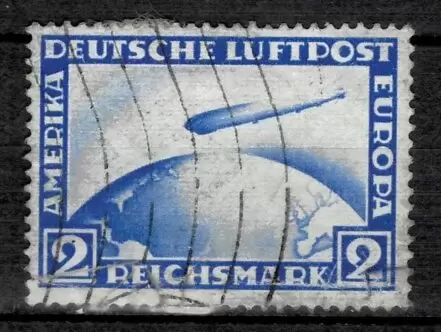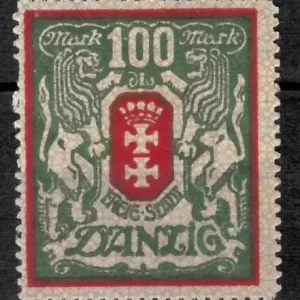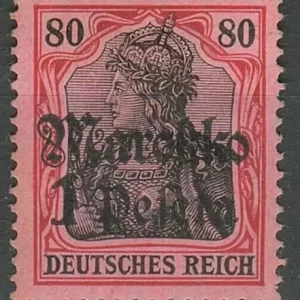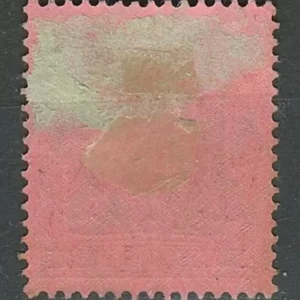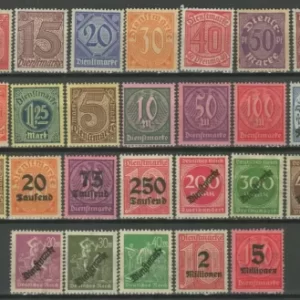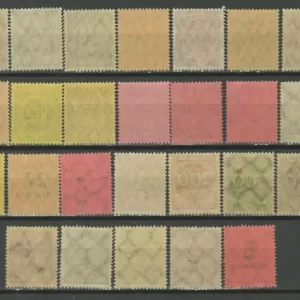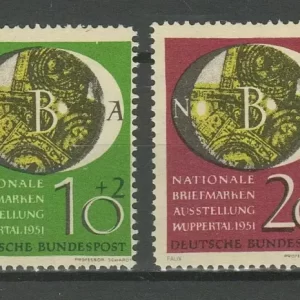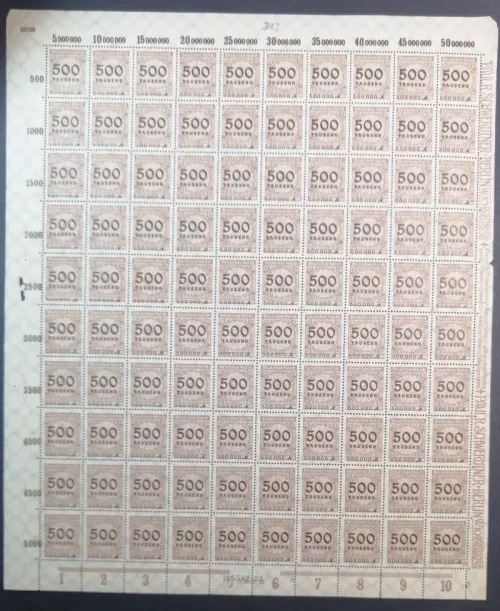Bavaria – Bayern year 1919 stamps Short set No. 136-150 ☀ Used set with ovpt. stamps
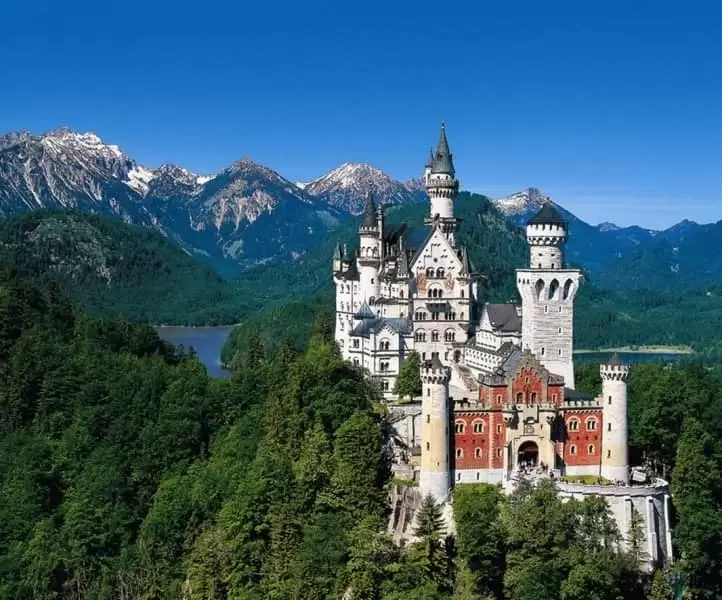
Bavaria, officially the Free State of Bavaria, is a state in the south-east of Germany. Bavaria is the largest German state by land area, comprising roughly a fifth of the total land area of Germany. With over 13 million inhabitants, it is the second most populous German state behind North Rhine-Westphalia, but due to its large physical size, its population density is below the German average. Major cities include Munich (its capital and largest city, which is also the third-largest city in Germany), Nuremberg, and Augsburg.
The history of Bavaria includes its earliest settlement by Iron Age Celtic tribes, followed by the conquests of the Roman Empire in the 1st century BC, when the territory was incorporated into the provinces of Raetia and Noricum. It became the Duchy of Bavaria (a stem duchy) in the 6th century AD following the collapse of the Western Roman Empire. It was later incorporated into the Holy Roman Empire, became the independent Kingdom of Bavaria after 1806, joined the Prussian-led German Empire in 1871 while retaining its title of kingdom, and finally became a state of the Federal Republic of Germany in 1949.
Bavaria has a distinct culture, largely because of the state’s Catholic heritage and conservative traditions, which include a language, cuisine, architecture, festivals, and elements of Alpine symbolism. The state also has the second-largest economy among the German states by GDP figures, giving it the status of a wealthy German region.
Contemporary Bavaria also includes parts of the historical regions of Franconia and Swabia, in addition to Altbayern.
When Bavaria became part of the newly formed German Empire, this action was considered controversial by Bavarian nationalists who had wanted to retain independence from the rest of Germany, as had Austria. As Bavaria had a heavily Catholic majority population, many people resented being ruled by the mostly Protestant northerners in Prussia. As a direct result of the Bavarian-Prussian feud, political parties formed to encourage Bavaria to break away and regain its independence.
In the early 20th century, Wassily Kandinsky, Paul Klee, Henrik Ibsen, and other artists were drawn to Bavaria, especially to the Schwabing district in Munich, a center of international artistic activity at the time.
The designation “Free State” has been adopted after the abolition of monarchy in the aftermath of World War I in several German states. On 12 November 1918, Ludwig III signed a document, the Anif declaration, releasing both civil and military officers from their oaths; the newly formed republican government, or “People’s State” of Socialist premier Kurt Eisner, interpreted this as an abdication. To date, however, no member of the House of Wittelsbach has ever formally declared renunciation of the throne. On the other hand, none has ever since officially called upon their Bavarian or Stuart claims. Family members are active in cultural and social life, including the head of the house, Franz, Duke of Bavaria. They step back from any announcements on public affairs, showing approval or disapproval solely by Franz’s presence or absence.
Eisner was assassinated in February 1919, ultimately leading to a Communist revolt and the short-lived Bavarian Soviet Republic being proclaimed on 6 April 1919. After violent suppression by elements of the German Army and notably the Freikorps, the Bavarian Soviet Republic fell in May 1919. The Bamberg Constitution was enacted on 12 or 14 August 1919 and came into force on 15 September 1919, creating the Free State of Bavaria within the Weimar Republic.
Extremist activity further increased, notably the 1923 Beer Hall Putsch led by the Nazis, and Munich and Nuremberg became seen as strongholds of Nazism during the Weimar Republic and Nazi dictatorship. However, in the crucial German federal election in March 1933, the Nazis received less than 50% of the votes cast in Bavaria.
As a manufacturing center, Munich was heavily bombed during World War II and was occupied by United States Armed Forces, becoming a major part of the American Zone of Allied-occupied Germany, which lasted from 1945 to 1947, and then of Bizone. The Rhenish Palatinate was detached from Bavaria in 1946 and made part of the new state Rhineland-Palatinate. During the Cold War, Bavaria was part of West Germany. In 1949, the Free State of Bavaria chose not to sign the Founding Treaty (Gründungsvertrag) for the formation of the Federal Republic of Germany, opposing the division of Germany into two countries after World War II. The Bavarian Parliament did not sign the Basic Law of Germany, mainly because it was seen as not granting sufficient powers to the individual Länder (states), but at the same time decided that it would still come into force in Bavaria if two-thirds of the other Länder ratified it.


